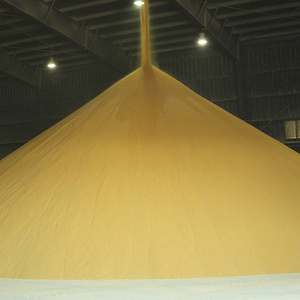Commodities: China on the sidelines of DDGS buying

September 25, 2015
BY Sean Broderick, CHS
With October nearly upon us, the DDGS market continues to move back down to the lower end of the spectrum as a percentage of corn. Chinese buying, which moved the market up through the spring and early summer, has been on the sidelines for the past several months. China’s recent absence, combined with the winding down of contracts booked earlier in the year, had put DDGS prices in a veritable no man’s land, with reduced Chinese demand, but also still at values that do not yet incentivize full-scale domestic buying.
U.S. cattle demand, which comprises more than half the DDGS that is sold domestically, does not normally kick in until around the beginning of November. Prices should be around where poultry usage picks up, which would also happen closer to November. Dairy margins have been poor out West, so that demand is more nearby than deferred purchases. The hog sector in the Midwest is best situated to take advantage of falling prices, and have seen the best demand from them.
Looking ahead, China’s buying decisions will affect DDGS to the upside, but their lack of buying has been mostly priced into the market today. The U.S. crop size is sure to affect demand, but currency and equity woes throughout the world will have the most impact on DDGS exports and pricing in the months to come.
Advertisement
Advertisement
| DDGS Prices ($/ton) | ||||
| LOCATION | Nov 2015 | Oct 2015 | Nov 2014 | |
| Minnesota | 115 | 125 | 100 | |
| Chicago | 135 | 155 | 105 | |
| Buffalo, N.Y. | 128 | 158 | 120 | |
| Central Calif. | 178 | 185 | 169 | |
| Central Fla. | 158 | 178 | 143 | |
Advertisement
Advertisement
Related Stories
CoBank’s latest quarterly research report, released July 10, highlights current uncertainty around the implementation of three biofuel policies, RFS RVOs, small refinery exemptions (SREs) and the 45Z clean fuels production tax credit.
The U.S. Energy Information Administration maintained its forecast for 2025 and 2026 biodiesel, renewable diesel and sustainable aviation fuel (SAF) production in its latest Short-Term Energy Outlook, released July 8.
XCF Global Inc. on July 10 shared its strategic plan to invest close to $1 billion in developing a network of SAF production facilities, expanding its U.S. footprint, and advancing its international growth strategy.
U.S. fuel ethanol capacity fell slightly in April, while biodiesel and renewable diesel capacity held steady, according to data released by the U.S. EIA on June 30. Feedstock consumption was down when compared to the previous month.
XCF Global Inc. on July 8 provided a production update on its flagship New Rise Reno facility, underscoring that the plant has successfully produced SAF, renewable diesel, and renewable naphtha during its initial ramp-up.
Upcoming Events










